Chris Baty's Blog, page 139
September 30, 2016
It’s OK to Be an Introvert: Following Your Own Path to 50K

NaNo Prep is always better with an incredible writing community around you. Luckily, the NaNoWriMo forums are full of fantastic writers. Inspired by our Reaching 50,000! forum, we asked LeKesha Lewis, NaNoWriMo participant, to talk about her path to reaching 50K:
I was under a lot of stress last November, some of it post-traumatic. As an activist, being keyed into the miseries of the various communities to which I belong takes a greater toll on my creativity than I’d like. I moved to a new place and started a new job–and I’d newly decided to commit to my dream of writing professionally, which brought with it its own anxieties over inadequacy and rejection.
In the midst of all this, I decided to try NaNoWriMo for the first time. Although it was a welcome distraction from my first query season, participating created its own anxiety. I was committing myself to making 50,000 words manifest coherently in 30 days. I was certain on November 1st that I would collapse under the weight of these things.
In spite of my doubt, I reached 50,000 words by November 20, and still kept writing. When I won, I reflected on my surprise and rambled briefly on my personal blog about what the experience taught me about myself:
“I am a happy observer. I am a bejeweled and coffee-soaked fly on the wall.”“I’ve learned and confirmed some things about myself and my process over this last month. Chiefly among the confirmed things is the fact that I am NOT a social writer. I couldn’t get into word sprints. I made an effort to attend exactly zero write-ins. I’d click around in the NaNo forums and find the occasional interesting topic, then I’d go to chime in and immediately decide that OMG SAYING THINGS IS EXHAUSTING. I am a happy observer. I am a bejeweled and coffee-soaked fly on the wall. I hope this makes me a better writer than I am a party guest.”
I fully embrace writing as an introvert’s joy. And I appreciate the NaNo format because it doesn’t require that you use the social participation components in order to become a winner, although those tools are ready should you ever need them. In that way, it’s the best kind of community: one that sincerely wants you to do well and supports you while still respecting your privacy.
“You have the rest of your life to get to 50K on whatever you start this November. Or not. The point is that you grow in your craft.”This year, as every year, there are new stresses, new circumstances, new triggers vying for our attention. And sometimes they will consume more of it than we’d like. Life might get in the way of 50K, but don’t let yourself get taken over by disappointment if that happens. We have to be kind to ourselves with this undertaking.
Time doesn’t stop on December 1st. You have the rest of your life to get to 50K on whatever you start this November. Or not. The point is that you grow in your craft. If you can manage that–even slightly–you’ve won.

LeKesha (L.D. Lewis) is the Art Director for FIYAH Magazine of Black Speculative Fiction. She writes a lot of fantasy and reads a lot of non-fiction. She is an ASL teacher in Florida, reads for bipolar representation for Disability in KidLit, and blogs about books and mental health occasionally for BlackGirlNerds.com. You can follow her on Twitter @ElleLewis6 and on Tumblr.
Top photo by Flickr user Gregory Gill.
September 28, 2016
My Writerly Weakness: A Novel Not about Me?
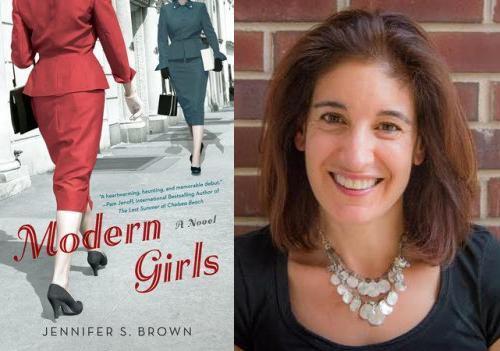
As we dive into the NaNo Prep season, we’ve asked NaNoWriMo participants who’ve published their NaNo-novels for their writing tips on everything from inspiration to avoiding plot holes. Today, Jennifer S. Brown, author of Modern Girls , shares a few tips on researching, writing, and how to branch out:
In 2001, I attempted my first NaNoWriMo novel. My masterpiece was contemporary fiction about a young woman working at a book-selling dot com in Seattle. Not coincidentally, at the time, I was working at a book-selling dot com in Seattle.
A couple of years later, I tried another NaNoWriMo novel. This one was about a young woman who escapes a bad relationship by running off to work on a kibbutz in Israel. Interestingly, at one time, I myself escaped a bad relationship by running off to work on a kibbutz in Israel.
Both novels were fun to write, but I knew that my thinly disguised autobiographies were of interest to no one but me and my family. Okay, maybe not even my family. If I wanted to create a story that would be of broader interest, it was time to write outside the sphere of me.
The books I turn to when I want to completely escape are historical novels, so that’s what I wanted to write. Plus I had the niggling of an idea: unplanned pregnancy during the Great Depression. But how would I do it? How does one write a novel that’s not about oneself? And even worse, one that takes place in a completely different time period? Historical novels seemed like so much work.
I needed basic tools on writing about another time period. The first thing I did was take a weekend seminar on historical fiction at Grub Street, Boston’s writing center. Writing classes are available throughout the country at community colleges, writing centers, adult education programs, libraries, and elsewhere. This class gave me the fundamentals on how to research. I took the course at the beginning of the summer, so I used the rest of the summer to prepare.
“While what I did was specific to my topic, the tools I used would be valuable to any author.”Don’t roll your eyes at me! This is not cheating. If you read your NaNo rules, planning is encouraged. The previous two novels I wrote cold, but that was okay, because I am an expert on the subject of me. This time, writing on a topic about which I knew little, researching was essential. The mother in my story didn’t want her daughter to have the child. But what were her options? I more or less moved into my town’s library, which although not big, was able to order books from other libraries in our region’s network, and I requested books on abortion in American history. My library also has electronic databases, some of which I could use from home with my library card, and I scoured newspapers from the 1930s.
Each piece of research led to more ideas. From the online New York Times, I learned that socialism was a burgeoning movement in the 1930s. I would make one of my characters politically active! To go in-depth, I made my way to old periodicals like The Nation and The New Leader. The formality of the writing in the articles reminded me that different eras have distinctive language usage, so I binge watched movies from the 1930s (checked out of the library or streamed from Netflix and Amazon) to understand the slang of the day and, as a bonus, I saw how my characters should be dressing. Creating a 1930s music playlist helped me set a proper writing mood.
While what I did was specific to my topic, the tools I used would be valuable to any author: Google maps shows what locations look like; lists of newspapers on Wikipedia tell where to find articles; map rooms at libraries have transportation and business maps. All of my ideas, notes, and facts were compiled in a notebook that lived with me during the research process.
When November 1st rolled around, I was burning to dive into what would become Modern Girls. The period, as well as the characters, were alive for me. The resulting novel was… well, crap. But I had the first half of my first draft, which with a few years and many, many revisions became the novel that got me my publishing contract. And I did it all without a single character based on me.
Jennifer S. Brown has a BFA in film and television from New York University and an MFA in creative writing from the University of Washington, Seattle. This makes her uniquely suited to write film reviews, which would be great if she hadn’t stopped going to the movies when her kids were born. She’s published fiction and creative nonfiction in The Best Women’s Travel Writing, The Southeast Review, and Bellevue Literary Review among other places. Modern Girls (NAL/Penguin) is her debut novel.
September 26, 2016
Road Trip to NaNo: Risking It All for Writing
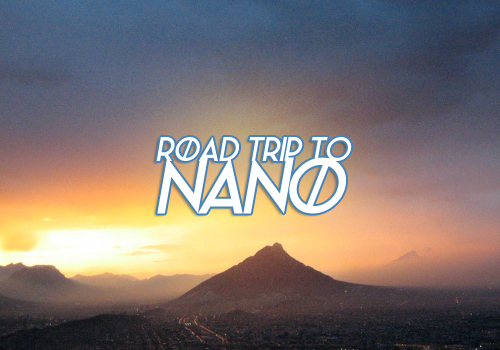
NaNoWriMo is an international event, and we’re taking a Road Trip to NaNo to hear about the stories being written every year in our hundreds of participating regions. Today, Quidec Pacheco, our Municipal Liaison in the Mexico :: North region urges you to stay true to the reasons you write:
This is Mexico: land of the bittersweet. In the north of the country, every day is a question: Should I stay here? Where is my life going? Will this business work? Since we live in the driest part of our land, it’s common to have doubts and double-takes about every endeavor—and writing is no exception.
I live in Monterrey—the industrial capital of Mexico—where the general population believes, for the most part, that income should always be spent on useful things first, not art.
Artists are scarce, and have a hard time pursuing their craft, so the very few ones I have had the chance to meet are resolved to risk everything for their letters.
But pushing through this adversity only makes writing here more true to the spirit of its writers. Writing has proven itself to be useful—not only to the readers, but to the artists, too. Finding a way to speak about the questions that haunt us clears the clouds and shines some reason upon us.
“We are survivors of the north. Explorers of the unknown. Doers against the odds. But then, isn’t that what all writers are?”That’s the process I’ve seen during our write-ins and get-togethers: questioning our characters, plot, theme, and the quality of our own writing. In every workshop and write-in I have directed, my goal is always to produce something: to bear fruit, vomit, or anything else that will help a writer through the process of letting their fear go. The pressure a brand-new writer brings with them is overwhelming—their need to make a masterpiece with the first stroke breaks my heart every time—but someone has to tell them that it is okay to be bad (especially with a first draft). Too much doubt leaves you stranded in a literary desert.
Ray Bradbury said, “You can’t write 52 bad stories in a row”. In writing, quantity is a path to quality. Expect people to tell you you’re not good enough; today you may not be, but hard work will lead to self-knowledge of your own capabilities. You will never know if you can write noir, or steampunk, or limericks if you don’t try.
Living in this city has taught me to be cautious, to plan ahead, and to always have a backup. Writing with others in my city has taught me to risk it all, work hard, and grow a thicker skin. At the end, I think they are the two sides of the people here, sides that are revealed when we face our fears, and exchange doubt for bravery. We are survivors of the north. Explorers of the unknown. Doers against the odds. But then, isn’t that what all writers are?
NaNoWriMo in Mexico :: North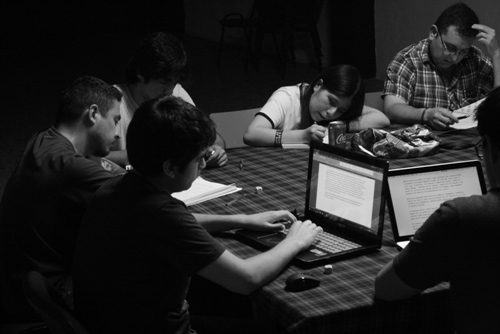

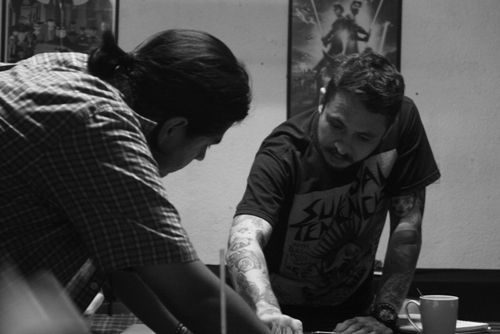
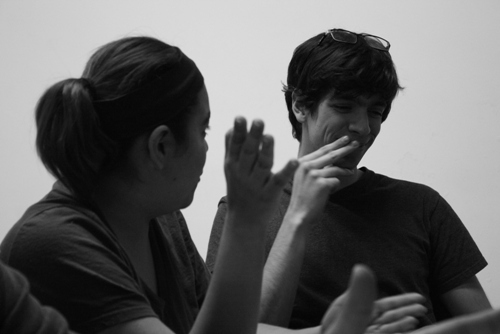

Quidec Pacheco is a Co-ML for the North of Mexico with Paola Parra. He writes short stories and comics, mostly sci-fi and adventure. He works as a copy editor at Fixión Narradores, a comic book publishing house in Mexico; gives the occasional writing workshop; and travels to municipalities of his state, doing courses on personal development. Likes food. Dislikes cats. Doesn’t know how to feel about My Little Pony.
Top photo taken by Flickr user Jon Gosier
September 23, 2016
Four Fabulous Ways to Create Stand-Out Character Names
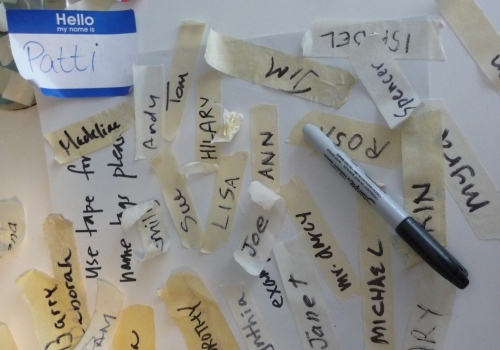
NaNo Prep is always better with an incredible writing community around you. Luckily, the NaNoWriMo forums are just the place to find assistance or inspiration from other participants from around the world. Inspired by our Appellation Station forum thread, we asked Melissa Rose, NaNoWriMo participant, to talk about coming up with the perfect character name:
You know those moments that make your readers jump up and down cheering for your protagonist? Or shout obscenities against your antagonist? Well, believe it or not, your characters’ names can enhance your readers’ emotions! Before you scurry off to your favorite baby name website, here are four tips to help you catapult a character’s name to the next level in your story.
Don’t make cookie-cutter characters.There’s nothing wrong with wanting a character’s name to be perfect, but remember, having a name contrast with your character’s personality might shake things up a bit. A disconnect between your character’s name and how they act can help develop those interesting character flaws - and who doesn’t love a flawed character? Real-life people don’t always turn out the way you’d hoped, and it’s wise to remind readers of that truth. Invite a sense of reality verses expectation. Creating that reality in your story also reminds readers that it’s okay to be themselves. Go against the grain! However…
Go easy on the creativity.Even when you’re trying to make sure a character’s name isn’t too predictable, remember that your readers will want to be able to get to know your character. It’s true, we writers enjoy finding unique names, but what most readers enjoy is a relatable name… or at least one they can pronounce! And while you want to ‘wow’ your readers with that epic, memorable, oh-so-stylish name, you may want to take caution. Remember, if it’s your protagonist that you’re naming, your reader will have to say this name in their heads many times until the end of your story. Let’s not distract them along their journey.
Reserve the honor.We all get that wonderful urge to name a character after our favorite person in the world. It’s your story, so why not throw in the name of someone who deserves the honor, right? Before you do, just remember to use care when choosing whom to include - and ask for permission! Not everyone likes to be the honoree, but if they do, this will cut your decision time in half.
Don’t take names too seriously.Discovering names with great meaning is no doubt important, but if you find yourself consumed in deciding on the perfect name, a good old game of ‘Eeny Meeny Miny Moe’ may be in order. Don’t forget you still have a story to write. Trust your gut and go with it. Someone is bound to love the name you’ve chosen, trust me.

Melissa L. Rose is a YA Fiction writer born in Maryland, USA. She is an active member of the SCBWI writers’ organization and the Inked Voices critique group. When she is not writing, she can be found counseling troubled youth, spending hours reading in bookstores, and taking care of her free-spirited pup. She has always been passionate about writing for the young and the young at heart. You can connect with Melissa on Twitter @MelissaRWrites.
Photo by flickr user Rex Roof.
September 21, 2016
6 Ways to Overcome an Inspiration Emergency
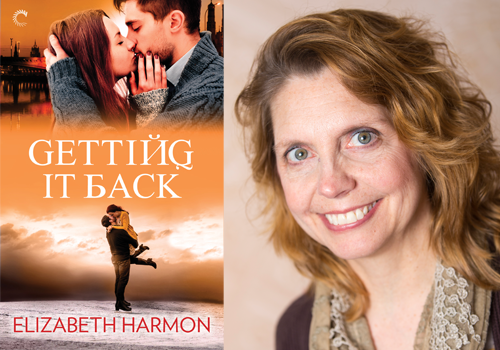
As we dive into the NaNo Prep season, we’ve asked NaNoWriMo participants who’ve published their NaNo-novels for their writing tips on everything from inspiration to avoiding plot holes. Today, Elizabeth Harmon, author of Getting It Back , shares a few tips on how to get inspired even when your muse is missing:
Thomas Edison is famous for saying that genius is one percent inspiration and ninety-nine percent perspiration. I’m not elevating my work to genius level, but after completing five novels, I think Edison’s ratio sounds about right.
Certainly, there are moments of lightning-bolt brilliance and blissful communion with the muse. But the times when the words come slowly, badly or not at all are a lot more common. The sooner a writer realizes this is a normal part of the process, not a personal failure, the more confident they’ll feel.
Over time, authors learn techniques to keep the words flowing when the muse inevitably goes MIA. Here are a few that have worked well for me.
Know your process.Can’t crank out 1,667 words in a sitting? Me either. Find what you can write comfortably, and make that your goal for each writing session. During NaNoWriMo, that might mean more than one writing session per day, which will help you to…
Stay in the story.Frequent writing keeps the characters active in your head, even when you’re away from your desk. Carry a notebook or install a dictation app on your phone to capture those sparks of inspiration, and fuel your next writing session.
Write out of order.Itching to write that spectacular ending? Then do it! While linear writing (chapter one, chapter two…) works for some authors, others (like me!) prefer to skip around in the story, writing scenes they’ll later graft into chapters. HINT: Giving your scenes temporary titles rather than numbers make them easier to identity and reorder later.
Change it up.Swap your laptop for a spiral notebook, your quiet office for a busy coffee shop. Sometimes a break in the routine is all you need to demolish writer’s block.
Set the mood.Writing a love scene? Light candles, and play love songs. A fist fight? Get the adrenaline pumping with strong coffee and hard rock. If your protagonist scarfs down a PB&J, or sips a fine French Cabernet, make a sandwich or pour a glass. Sampling what your characters see, hear, touch and taste as you write can provide authentic sensory details that bring your scene to life. I also create a soundtrack for each of my books, and collect photos of locations and characters, to provide a quick shot of sensory inspiration.
Ignore the inner editor.That time-tested NaNoWriMo advice is your best friend when the muse takes a hike! As prolific romance author Nora Roberts is famous for saying, “you can fix anything but a blank page.”
Moments of genius are great, but real success comes when you’re willing to break a sweat.
Elizabeth Harmon is a contemporary romance author who loves to read and write romances with a dash of different. A graduate of the University of Illinois, she has worked in advertising, community journalism and as a freelance magazine writer. Her debut novel, Pairing Off, the first book in her Red Hot Russians sports romance series, is a 2016 RITA Award Finalist. She completed the first draft of her current release Getting It Back during NaNoWriMo 2014.
September 19, 2016
Road Trip to NaNo: Following the Small Lights of Your Imagination
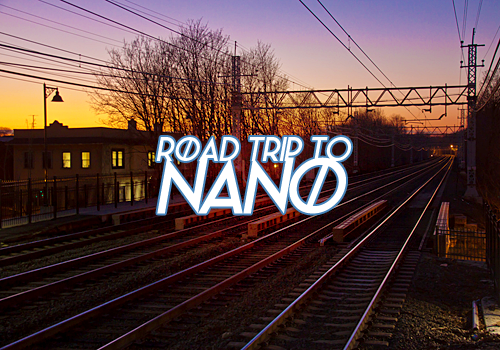
NaNoWriMo is an international event, and we’re taking a Road Trip to NaNo to hear about the stories being written every year in our hundreds of participating regions. Today, David Rivera, our Municipal Liaison in the USA :: New York :: White Plains & Westchester County region urges you to seek out your small lights:
As the concrete-tied train tracks make their way towards the big city, there are several stops along the way—including Westchester County, connected by the train to the big city called New York. Westchester County is a small light—a spark of imagination—illuminated by arguably the greatest city on this planet.
The small light is where many of us writers are. We only need to check in with our small lights to channel our imaginations toward a final destination, whether it be the big city, act two, or an agent taking a look at what you have and saying “Yes”.
Living with this small light has taught me this: just let go, and don’t be surprised by anything your imagination is trying to tell you. It is perfectly normal not to be able to type fast enough to keep up with what the imagination is communicating. Keep going and be shocked by the results afterwards. That is what happens when a 5,000-word day comes unbidden, or a 50,000-word month.
As you begin this process, find those small lights that speak to you. They will yell loudly in their own way. Whether it be door lights, fireflies or some other small light in your imagination, let them take you on their journey. They may fade for a little while, but they will take you further down the tracks to where you are going next.
For instance, as you begin your planning process, don’t summarily say no to a setting that feels too mundane. There is always something sinister going on in that village you don’t want your main characters to stop at. Further along, the light may well guide you to a scene that you never saw coming, with a denouement that makes you cry or remind you of someone close to you that is no longer around. Let the little light of imagination guide you to where you never thought you were going to go.

David Rivera is a second-year Municipal Liaison who, when not trying to copy down what his small lights tell him, takes said concrete-tied train tracks to his job in higher education, chases down miscreant beasts, sets traps for unsuspecting adventurers. and hunts down street pianos.
Top photo taken by Flickr user ChrisGoldNY.
September 14, 2016
3 Crucial Lessons about Writing Fiction
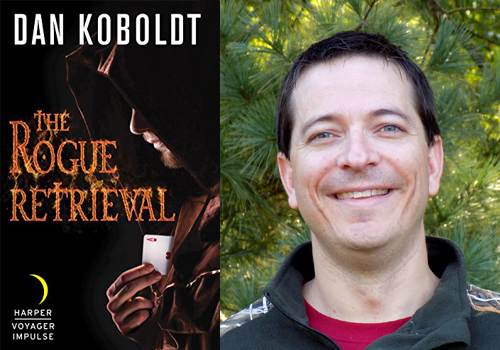
As we dive into the NaNo Prep season, we’ve asked NaNoWriMo participants who’ve published their NaNo-novels for their writing tips on everything from inspiration to avoiding plot holes. Today, Dan Koboldt, author of The Rogue Retrieval , shares the three most important writing lessons he’s learned:
When I began writing fiction in 2008, I thought it would be easy. At the time, I had a number of research papers and nonfiction articles under my belt. I considered myself a fairly good writer, in fact. Then I took my first course in fiction writing. As the class critiqued my first-ever short story, it became painfully obvious that I was fairly terrible at it.
Although I cut my teeth on short fiction, it wasn’t until I began writing novels that I really leveled up. I won my first NaNoWriMo in 2009. That book will never see the light of day, but I was learning. I landed a literary agent in 2014, and signed a book deal with Harper Voyager in 2015. Here are three of the most important things I learned along the way.
1. Structure leads to better storiesI’m a so-called “pantser” by nature, meaning that I prefer to write without a detailed outline in place. Although that style works for me, it also tends to result in a wandering narrative that requires a lot of structural revisions. My book-writing process improved considerably after I adopted the StoryFix method by Larry Brooks. StoryFix divides the structure of a story into four distinct parts—setup, response, attack, resolution—and indicates the progress point for each. For example, the setup should take the first 25% of the book.
Although the method includes more in-depth elements, I think the high-level structure offers a nice compromise between seat-of-the-pants writing and OCD-level outlining. I don’t have to plan out every single scene, but if I follow the StoryFix structure, I won’t end up with a shapeless hot mess when I’m finished. I call that a win.
2. Dialogue is difficult to write wellDifferent writers have different strengths and weaknesses, but after writing and critiquing fiction for 8+ years, I’m convinced that dialogue is one of the hardest things to do well.
The good news is that it’s a skill that can be honed with practice. I pay a lot of attention to it in my writing—minimizing attribution tags, making it sound natural, etc.—and I always admire the work of other writers who handle it well.
3. It doesn’t have to be perfectNaNoWriMo taught me one of the most important lessons about writing: draft one is allowed to suck. Most books are made in revisions. By the time The Rogue Retrieval was published, it had seen at least six major revision passes: my own self-edits, along with those of critique partners, my literary agent, my editor, and my copy editors.
Draft one is the rough cut. Don’t let anyone tell you differently. It’s freeing, in a way, because it lets you turn off your internal editor and just get the words down on paper. That, fundamentally, is what NaNoWriMo is all about.
Dan Koboldt is a genetics researcher, bowhunter, and fantasy/science fiction author. He has co-authored more than 60 publications in Nature, Science, The New England Journal of Medicine, and other scientific journals. His debut novel—about a Vegas magician who infiltrates a medieval world—began as a NaNoWriMo project in 2012. Harper Voyager published The Rogue Retrieval in March 2016, and recently acquired two sequels. Look for The Island Deception in February 2017 and The World Awakening in 2018.
September 12, 2016
Road Trip to NaNo: 3 Tips to Write Like the Rain
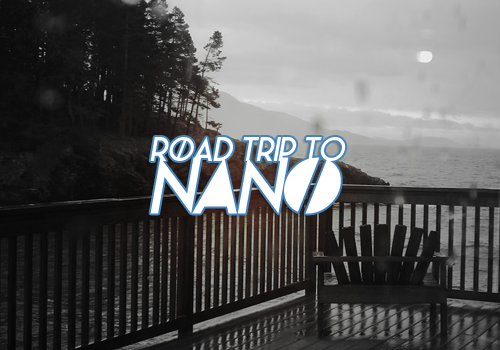
NaNoWriMo is an international event, and we’re taking a Road Trip to NaNo to hear about the stories being written every year in our hundreds of participating regions. Today, Joy DeVore, our Municipal Liaison in the USA :: Washington :: West Sound region urges you to write like the rain:
Welcome to West Sound, Washington! When most people think “Washington”, they picture one of three things:
Washington DC (Not us.)Seattle, Washington (Still not us.)
The damp, temperate, woodsy Northwest (Ding, ding! That’s where the West Sound is located.)
Our region is pretty vast. We may not have the Space Needle but we do have some great hiking trails, camping spots, mountain climbing, water-skiing, and we know how to make a mean latte. We also have water. Lots and lots of water. We’ve found that writers can take a tip from our brand of liquid sunshine. After all, rain is both fluid but also unrelenting at the same time.
Be unstoppable.Rain doesn’t care about your picnic, your soccer tournaments, or your wedding. Once the rainstorm starts, nothing will make it stop until it’s finished.
Do the same thing. Write what you want. Only let the right influences in—the ones that inspire you to write. Don’t believe others if they tell you that you can’t write—those people can just go jump in a lake. Give me their names. I’ll give them what for!
*clears throat* Ahem. Anyway….
Be fluid.Rain moves from one place to another as the wind stirs the clouds. Fluidity is about adapting. If you can’t write at home due to distractions, take a notebook and move: go to your patio, a café, to a friend’s house, or bust out your headphones.
Are you able to upload a copy of your work onto a cloud? (Wow, this rain metaphor is really taking me places, isn’t it?) This will allow you to write in other settings as well. When you have some time to write, pull up your project and write on your phone or tablet—even if you can only write for fifteen minutes.
Be prepared.While it’s not quite NaNoWriMo yet, it’s coming up fast. The last tip that I have for you is to come up with a back-up plan. I’ve learned (from having to plan events in a region where a rain cloud can pop up out of nowhere) that you should always have a back-up plan.
Here are some of my tips for things that you can do now, in case of unexpected events and roadblocks.
Write down a handful of interesting items that you can throw in your story if you get stuck: plot twists, surprise elements, new characters, or important objects.Set up a digital folder, external hard drive, or email folder in preparation for your weekly back-ups.Come up with rewards to help inspire you and to help push you forward during the NaNo-slump (which happens around the end of week two for me).Find a notebook to carry with you. It’ll be great for bursts of inspiration, notes, writing down observations, etc.Just like jumping in puddles and dancing in the rain, writing can be a lot of fun. Enjoy the process and have a great NaNo!
NaNoWriMo in USA :: Washington :: West Sound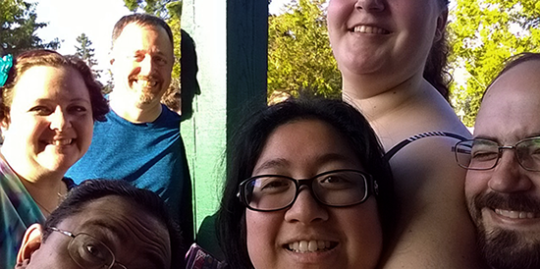
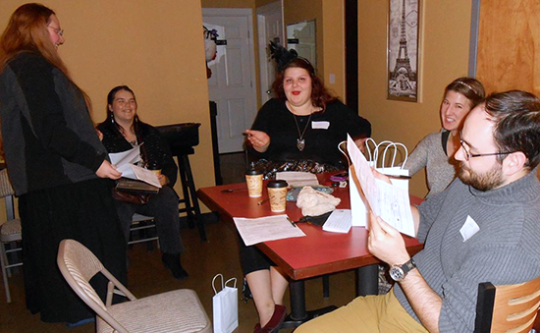
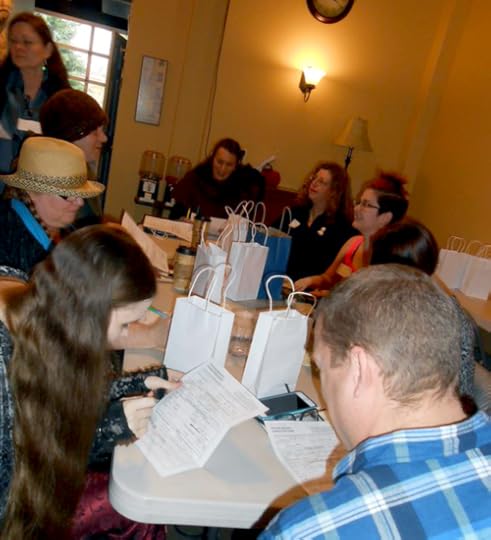

Jocelyn (Joy) DeVore is returning for her second year as an ML for the West Sound region. She writes dark humor, farce, satirical fantasy, and comedic thrillers. She works as a freelance writer, ghostwriter, and general keyboard adventurer. You can find her in a “made-for-TV” style neighborhood in the Pacific Northwest with her husband and dog.
Top photo taken by Flickr user zenobia_joy.
Region photos shared by Joy DeVore.
September 9, 2016
Claim Your Voice: Why You Don’t Have to Justify Your Diverse Story

NaNo Prep is always better with an incredible writing community around you. Luckily, the NaNoWriMo forums are full of fantastic writers. Inspired by our 200+ regional forums, we asked Kathy Vo, NaNoWriMo participant, to talk about writing stories that include culture-specific characters:
There’s a strong need to contribute more diverse stories across every creative medium. Yet when we feature leads of specific backgrounds, snarky voices often arise that don’t normally pop up for white, male leads.
As diverse authors, we regularly encounter choruses of “It’s too gay or girly for me”, "It’s not Asian/Black/Latino enough”, or "You’re making our people look bad.“
The scariest part about this? We’re probably our own loudest heckler.
As writers contributing to a pool of diverse stories, we stress about whether our stories properly represent these communities. We want our leads to be more than flat stereotypes; we’ve seen that positive and complex representations of diverse identities are often only respected if they fit a certain mold (my literature classes overdosed me with memoirs about poor refugees of war and suicidal LGBT teens). We’ve internalized the feeling that there needs to be a legitimizing, often tragic, reason for our protagonists to not be able, cisgender, white, or male. It’s a messed up mentality, but nearly every writer has thought this way at some point.
“Your story doesn’t need to be a dissection of society to feature Asian-American bachelors, or Latina tech CEOs.”
So how do you convince yourself that your story matters? Tell yourself this: your existence, and the existence of those around you, is why we need your story. That reason alone is good enough.
You do not have to legitimize anyone’s background, including your own. Your story doesn’t need to be a dissection of society to feature Asian-American bachelors, or Latina tech CEOs. If you want to explore their racial identity, that’s great. If your character is more stressed about fighting aliens than being in a wheelchair, that’s great too. Your stories are different because differences exist in the real world.
Nobody walks the same path in life, and your creativity, ideas, and stories have the right to be told.
If you’re not convinced, I want you to close your eyes. Think about every time you saw someone who looked like you, with a name like yours, on the cover of a movie poster or book jacket.
Now think about all the times you didn’t see yourself. Do you remember how you felt? It’s probably not joy. Whatever emotion came, someone like you has felt the same way, too.
You can share a culture, or background, or physical description with thousands, but no one owns your journey. Remove the pressure of providing the most accurate, comprehensive experience of your character’s respective community. Represent your voice first, and the rest will follow.

Kathy Vo is a diehard Californian trying navigate the adult world beyond happy hour deals, Bay Area traffic, and Korean spa treatments. Her middle-school self would exclusively write fantasy adventures starring white male heroes, but now she creates stories and screenplays exploring the AsianAmerican experience beyond math nerds and sexy geishas. Like many millennials, Kathy is clueless about her future, but is passionate about the problems she wants to solve.
Top photo modified from one taken by Flickr user Micah Camara.
September 7, 2016
6 Tips to Add to Your Writing Cheat Sheet

As we dive into the NaNo Prep season, we’ve asked NaNoWriMo participants who’ve published their NaNo-novels for their writing tips on everything from inspiration to avoiding plot holes. Today, J. C. Lane, author of Tag, You’re Dead , shares six things she wished she knew when she first started writing:
As with most things in life, it’s hard to know what to expect from a writing career until you’re in the midst of it. Here are a few things I’ve learned along the way that would have been helpful to know from the start! I hope they answer some of those questions you didn’t know you had…
Writer’s block is not really a thing.There is no gate crashing down in your brain to stop you from writing. Your muse does not suddenly turn her back on you. But there are such things as writing yourself into a corner, forcing a story down an incorrect path, and allowing a deadline to paralyze you.
If you find yourself at a standstill, take a deep breath and go back to the beginning to take a fresh look at what you’re doing and see where things went off track. It helps. Really.
Sometimes outlines are great, sometimes they aren’t.Half of my books have been written with thorough, detailed outlines. The other half came about by “writing into the wind.” Books, as well as writers, have different personalities. We each need to go with what works for us and for that particular project.
When I want to do deep pre-writing study, I reach for Martha Alderson’s Plot Whisperer Workbook or Cathy Yardley’s rockyourwriting.com. Both take you through character analysis, scene outlines, story arcs, and goals. It makes the work lighter to have organizational and creative help.
Be patient with yourself.You know those days when you feel like you’re never going to figure out what happens next/write well ever again/have an original idea? If you just give it time, things will work out—the plot will unwind, yesterday’s words will be better than you thought, and you’ll wake up with your next project begging to be written.
Scrivener is your best friend.When I first began writing novels (on a Mac Classic!) I would create separate files for each chapter, and once I’d merged them into one document I would have to hunt for things I needed to revise. Writing software like Scrivener makes it so much easier!
Just as with NaNoWriMo, there are writing communities all over: critique groups, conferences, organizations. Find one that works for you and get involved. If you can’t travel, get to know other writers online. Don’t work in a vacuum. It will make your writing better. I promise!
J.C. Lane is the author of Tag, You’re Dead, a YA thriller begun during NaNoWriMo 2013. She writes mysteries as Judy Clemens, including the Anthony- and Agatha-nominated Stella Crown series, the Grim Reaper mysteries, and the stand-alone Lost Sons. She is a past-president of Sisters in Crime and an Equity stage manager. When she is not writing she loves to spend time in the kitchen baking and cooking (and eating), collect Santa Claus figurines, and shuttle her kids to events.
Chris Baty's Blog
- Chris Baty's profile
- 63 followers



